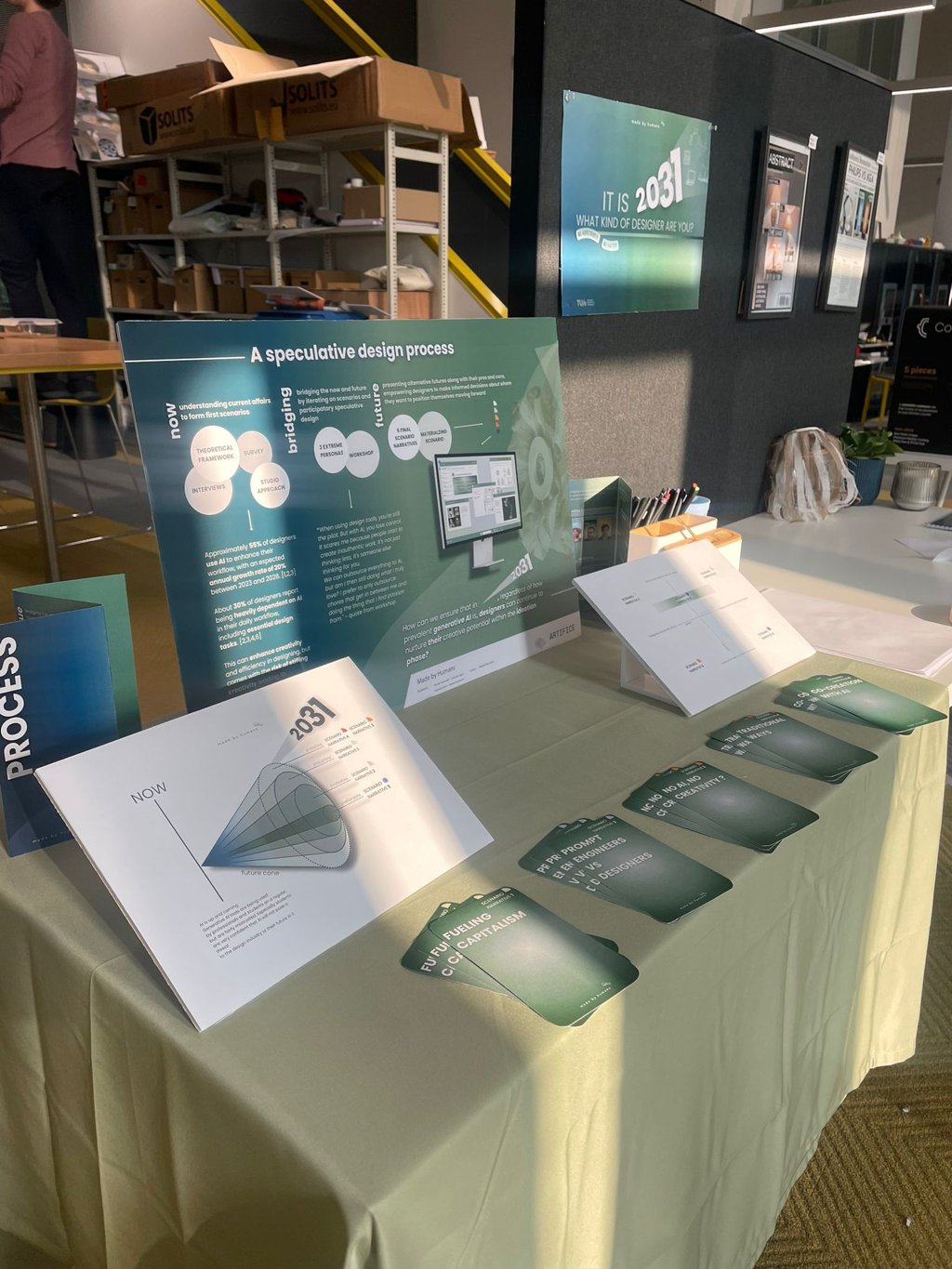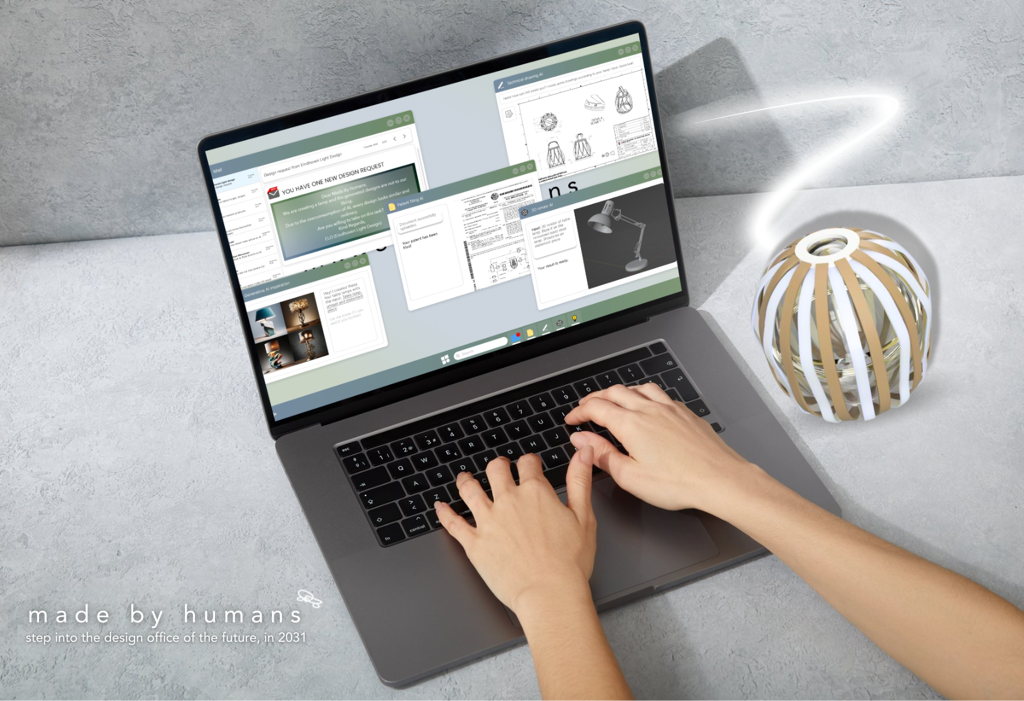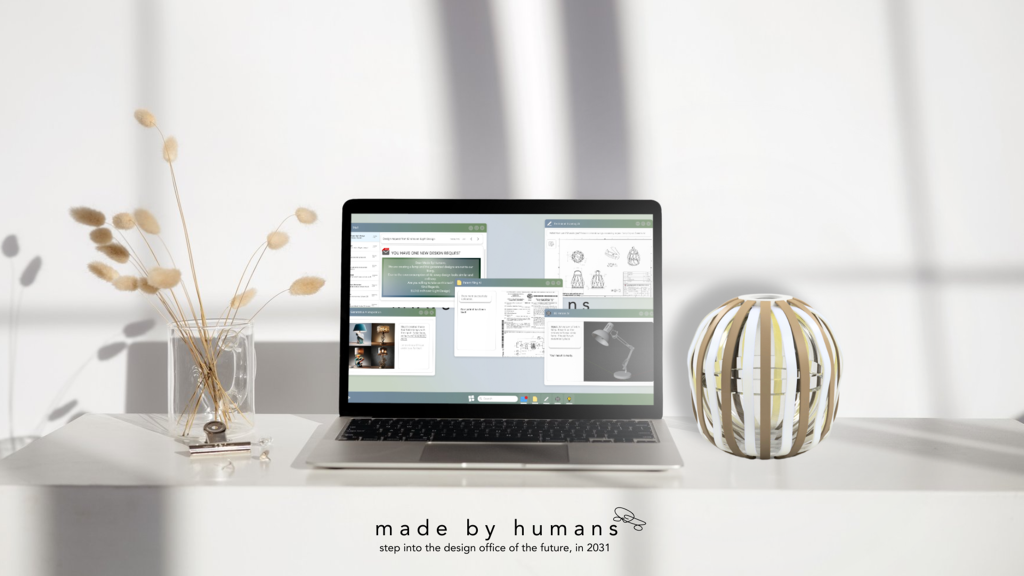Femke Veenvliet, Evita Jager, Daniël de Goederen , Isabella Faber
As AI becomes more powerful and integral to various fields, the design industry has to reconsider its reliance on AI for creative tasks. While AI can improve efficiency and creativity, it also raises concerns. Over-reliance on AI might lead to repetitive designs, as AI commonly generates new products based on existing ones. This reliance can also impact designers' creative autonomy and skill development. Additionally, the environmental impact of AI, due to its high energy consumption and accelerated mass production, cannot be ignored.
"Made by Humans" explores how designers can integrate generative AI effectively while maintaining their creativity. The project aims to help designers use AI thoughtfully and ethically, ensuring they benefit from its advantages without losing their creative edge.
What human qualities will remain vital in an AI-dominated future?
We tackled the challenge of guiding designers in an AI-driven future by mapping various potential scenarios based on the industry's use of AI and designers' willingness to embrace it. Our approach began with thorough research into current AI applications and designers' attitudes toward the technology. We developed speculative scenarios to illustrate different future outcomes, creating a visual representation of these possibilities. We then translated the research outcomes into an interactive demo where designers could immerse themselves in a future dominated by AI, in the year 2031. Participants designed objects and made decisions about their use of AI, immediately seeing the consequences of their choices. This immersive experience aimed to highlight the complexities of AI integration, helping designers, design students and other stakeholders understand its impact and make informed, thoughtful decisions about their creative roles in a technology-driven world.
With the "Made by Humans" project, designers and educational institutions gain valuable insights into integrating AI into design practices. Designers and students can use the findings to define their roles in an AI-centric future, shaping their career paths accordingly. Educational institutions like TU/e can apply the research to teach responsible AI use, balancing efficiency with creative autonomy and skill development. For companies, the project provides guidance on aligning AI with their ethical standards and understanding its impact on product outcomes. Although aimed at the entire design industry, the project does not offer a one-size-fits-all solution due to the diverse needs across design disciplines. While there is no definitive answer on the optimal amount of AI use, the project equips stakeholders with the knowledge to make informed decisions tailored to their specific contexts.




